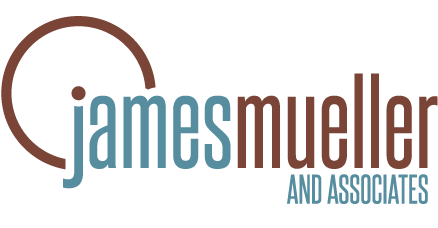Turning a Strategic Plan into Effective Action
Converting a strategic plan into effective action is a challenge for many organizations. So much so that there is an anti-strategic planning movement afoot. Proponents say that strategic planning takes too much time and energy. That in today’s rapid-paced, fast moving world, strategic plans don’t remain relevant long enough to be worth the effort.
I sympathize with that sentiment. With all that we have to do, why waste time in another series of meetings? But until we figure out how to have instantaneous environmental intelligence and strategy, we still need to take the time to research, reflect, and integrate in order to create order, organization, and direction.
A better term for strategic planning is probably the one coined by Willie Pietersen at Columbia University School of Management: “Strategic Learning”.
A well-designed strategic learning process is worth the effort. The failure is the inability to efficiently convert plans into effective action. There is a significant body of research that says that we try to do too much, that we focus on too much. As a result, our energy is depleted and our effectiveness is dissipated. I agree.
We are the most focused company that I know of or have read of or have any knowledge of. We say no to good ideas every day. We say no to great ideas in order to keep the amount of things we focus on very small in number so that we can put enormous energy behind the ones we do choose.
— Tim Cook, CEO of Apple
Steve Jobs promoted the idea of focusing on just three things at a time. That is, to think or conceptualize in a hierarchy of threes—no more than three at the top, each of which could have three components, and cascade down in resolutions of three. That notion is supported by marketing research that shows that people actually think in shelves of three. At a meeting with shareholders a few years ago, Tim Cook, current CEO of Apple, said that Apple is the most focused company he knows. He said that Apple says no to good ideas every day so that it can put enormous energy behind the ones it chooses.
If an organization is going to get things done it needs to convert its strategic plan into a series of annual plans that focus on a few, critical outcomes that must be achieved, the key activities that have the greatest potential (and leverage) to achieve them, and the assignment of accountabilities to teams/team members to take action.
Recently, I came across a book that when I read it my reaction was, “Damn, I wish I wrote that.” The 4 Disciplines of Execution (Chris McChesney, Sean Covey, Jim Huling) presents the results of a study of 300,000 leaders and team members and 1500 in-depth company engagements across 17 industries. One fundamental premise of the book is that organizations fail to achieve excellence because they try to focus on too many things. In translating good ideas into action, focus first and foremost on what’s important. This approach is an efficient and effective way to create momentum; it can translate a complex strategic plan into a performance road map.
Here is the approach I recommend that integrates what McChesney, Covey and Huling offer:
-
- Form a planning group composed of the most knowledgeable, well-informed leaders and managers of the organization. Make sure you have adequate representation from all teams or departments. The group should be thoroughly familiar with all planning documents.
- Revisit or review the organization’s core values, vision, and mission to ensure that priorities align with organizational purpose. The definitions that I prefer are:
- Values are the beliefs that called your organization into existence and guides its culture. Values comprise those things that “should be.”
- Vision is a description of how the world will be better for your constituency when you succeed at your work. Visions that are crafted as statements of how the organization will be pre-eminent are really goals. True visions describe how your work will make a difference in the world.
- Mission is simply what you do for whom, and to what end (impact). I have to credit Robert Sheehan at the University of Maryland for shaping my thinking on this definition.
-

McChesney, Covey, and Huling recommend that organizations create no more than three wildly important goals on which they focus the first 20% of time and energy throughout the year.
Step back and look at the viability of the organization and ask: What must we do this year that is new, different, or better in order for our organization to thrive and achieve its strategic goals/priorities/imperatives?
- The next phase is nicely captured by McChesney, Covey, and Huling when they recommend that organizations create no more than three wildly important goals on which they focus the first 20% of time and energy throughout the year. Focusing on too many things dilutes performance and quality. The other 80% will get done and is not eliminated from consideration because it is in the larger plan. The authors’ research revealed that when organizations focus intensely on these wildly important goals and create a cadence of accountability around them, performance throughout the organization improves.
- The core question is, “What are the two or three most impactful goals we can pursue that will transform our effectiveness and position us for the greatest ability to succeed in our mission in the next 12 months?” Each goal must define a measure of change. Defining these goals should include debate; they should be tested and questioned, then refined.
- Once the goal is defined, it is very important to identify key activities/tasks that are highly predictive of success and assign them to specific individuals or teams of individuals who are held accountable. The ability to undertake or perform the activities must be under the control of those to whom they are assigned. A simple example: Let’s say my wildly important goal is to improve my health and lose 10 pounds (measure of change). My key activities/tasks are diet (consume fewer calories and carbohydrates and increase protein intake) and exercise (walk, jog, use the stairs).
- Create a dashboard that tracks progress through the year. The dashboard should track both progress on the measure of change stated in the wildly important goal and progress on the key tasks/activities. For my example above, I would track my weight and my activities, i.e. what I ate and how much I walked, jogged, and used the stairs).
- Most importantly, create a cadence of accountability. Regularly (McChesney, et.al. recommend weekly) monitor progress by asking this set of questions: What did we say we’d do? What did we do? What was the impact? What will we do between now and our next progress meeting? In my personal example, I would keep a spreadsheet for each day that record change in weight and log diet and exercise activities.
Values are the beliefs that called your organization into existence and guides its culture. Values comprise those things that “should be.”
— McChesney, Covey and Huling
- In larger organizations, it is important to repeat this process throughout all of the departments, with each having one to three wildly important goals that align with those that have been established for the organization.
- As you implement your plan you will realize that it is an interactive process. As you monitor progress, you may notice that you are not achieving the results that you anticipated, or you discover that the goals and measures could be better articulated, or realize that different tasks or activities would be more effective. You will likely need to make adjustments and that is fine—just get the right people in the room for these discussions.
This organization-wide, performance-focused planning is very effective in defining the most important priorities and quickly building consensus. It is critical that you monitor progress and provide feedback at very regular intervals. Over the years I have come to appreciate the power of the cadence of accountability—when people know explicitly what they are responsible for, and when they are held accountable to perform those tasks, progress is made.

